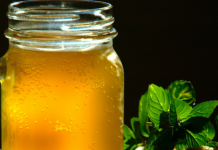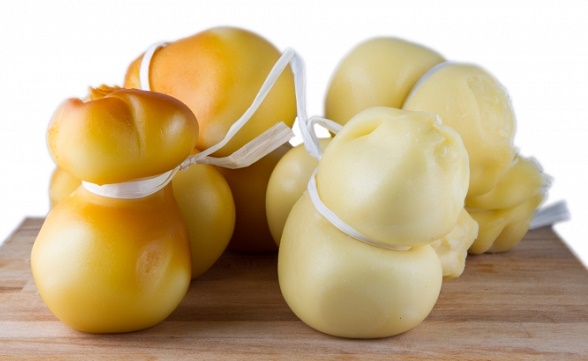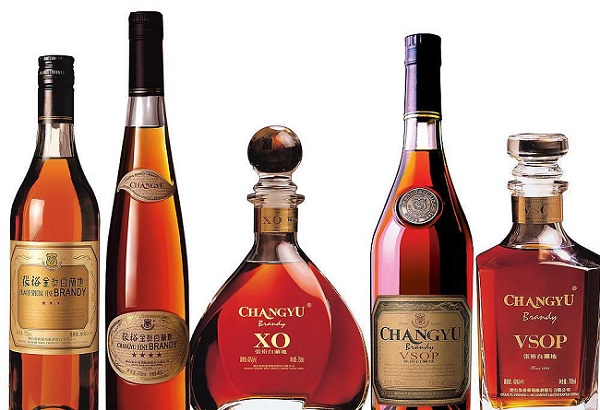
History and origins of the name
After a long period of aging in the barrels, the spirit, which is obtained from the distillation of wine, it takes the classic and well-known name of Brandy. Every country that grows the grapes can produce this distillate and in some areas this product receives a designation of origin, that linked to the production area. The meaning of the word brandy comes from the English language, which in turn then has been translated from the Dutch language, and means “burnt wine” distillate.
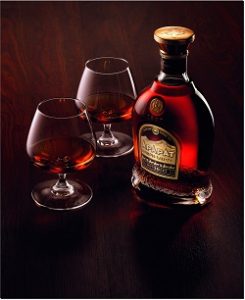
The Dutch are already provided, in the seventeenth century, of wines and spirits along the French and Portuguese coasts, in fact, they were already, at that time, the most famous traders of wines and spirits, which were then exported to Northern Europe and England.
Production
The first evidence of the presence of brandy in the world, were in a British comedy in 1622, and even brandy term is used today in England to indicate the cognac. For the production of brandy, are used wine distillates intact, or failure, but not acid, in particular dregs and marc. The finest brandies, are made from high acidity wines, very little in alcohol. The aftertaste should be neutral. The more variety for the use of brandy production is the Trebbiano, which in France is called “Ugni blanc“. To have an excellent distillate, these wines must be free of sulfites.
To produce the brandy, it is used a tool called “alembic“, and the phases of the distillation of wine are various, and depend very much on the tool that you are using. The yield of spirit shall be equal to 52% and 72% but also beyond, while the ordinary one is equivalent to a liter of distillate for every ten liters of wine.
The spirits, once distilled, must be subjected to a period of aging in barrels, before being bottled and marketed. In some country, there are laws that oblige the cold filtration of the distillate and also do indicate the type of wood to use for the period of aging in the barrels. Brandy just produced, are added with caramel and sugar, to give color and soften in flavor, and also parts of the oak (chips), to make present the woody aromas. After these operations, it is diluted with distilled water, in some exceptions, you go directly to the bottling of brandy, but only after a long period of aging.
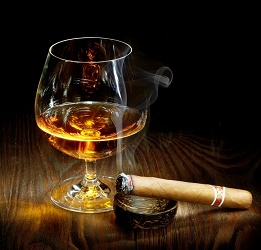
The brandy is an excellent digestive to be served on the table after a meal or as a distillate for meditation, often accompanied by a good cigar and bitter dark chocolate black. In Italy and also in Spain is also used to spike the coffee. The brandy has his glass, and this is of a truncated shape very similar to an egg that takes the name of “balloon” or “snifter” or even the glasses in tulip. To prevent them from being altered its aromas, brandy is not to be served with ice or heated with a heat source, only the glass can be heated with the heat of your hands.
Aging
A good cellar-master, knows when it must be moved a barrel, but also the best positions, to ensure the correct ripening. There are few manufacturers who also possess the vineyards, most acquire the raw material, but despite having regular supplies, the master blenders, are not able to establish the amount of supply required, decades in advance, for this purchase also very old reserves, using them with great care and attention, to make perfect the brandy or the most exclusive brands.
The minimum age of sale for a brandy is at least two and a half years from the 1st October of the harvest year. These are the limits set by law, but the most famous masters, boast of using much older reserves. The brandy production formulas are secret, and sometimes are changed on special request of the houses or buyers.

To appreciate the taste of this distillate, as the very first thing you need to observe the appearance and color. Often the typical color is obtained by the addition of caramel. To judge its aroma, the glass must be at a certain distance from the nose only to be approached slowly.
If slightly warmed, the brandy releases its fruity aroma balanced, and pleasant freshness. Its aging in barrels, let acquire to this distillate spicy notes and a vanilla aftertaste. The brandy must be savored in small amounts, in order to appreciate its long taste, without overdoing alcohol.
Some sommelier suggest to breathe with a whistle, then rippling lips and inhale the air from the sides of the mouth and taste so the brandy with the back of the tongue where there are the taste buds. With this system, you should savor its taste on the whole back palate.


